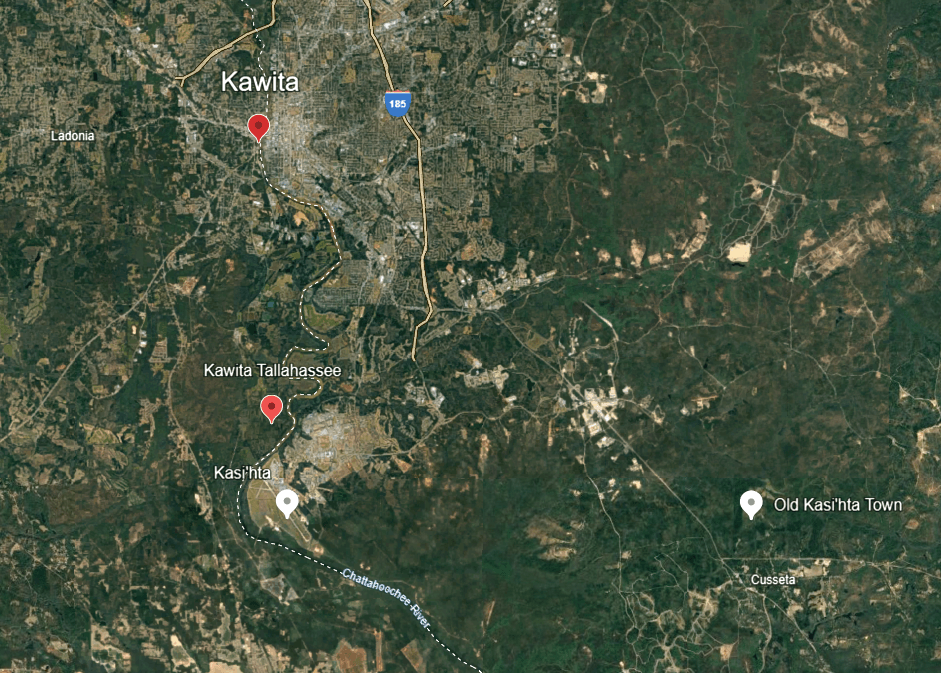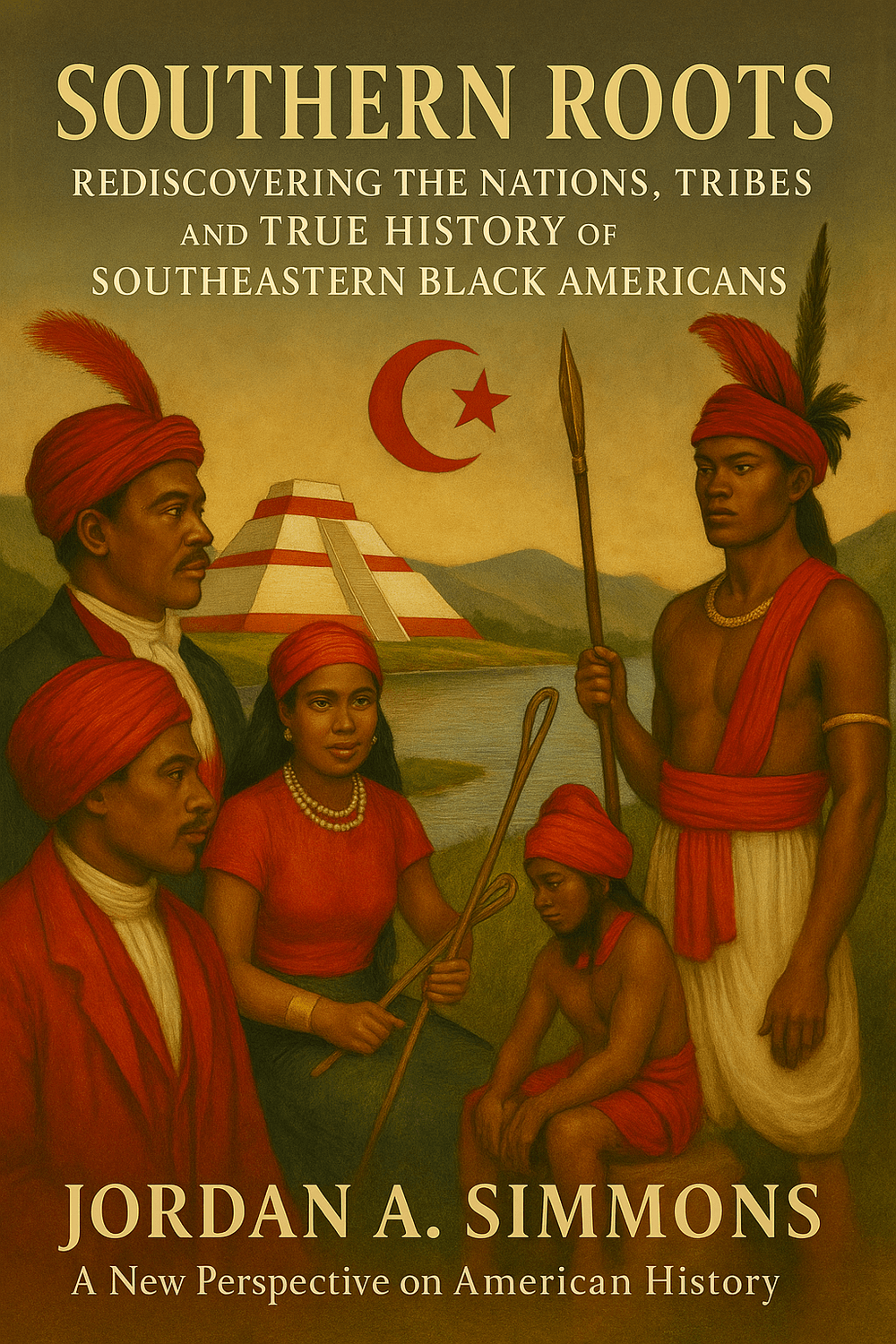Kasihta: The White Town of Ceremonial Power
This article is part of our series "The Hidden Nations of the American South," revealing the true town-nations behind today’s Southeastern Black Americans.
Before it was called “Cusseta,” before it was buried beneath maps and renamed by outsiders, Kasihta stood as one of the oldest ceremonial capitals of the American South.
Known for its sacred order, ceremonial law, and spiritual alignment, Kasihta—sometimes spelled Kashita—was not a village. It was a White Town: a peace capital. One of the twin centers of the Southeastern confederacy alongside Kawita, it held the spiritual fire and governed through sacred diplomacy.
The Twin Nation
Kasihta and Kawita were remembered as twin towns—emerging from the west together and later separating along the Chattahoochee River. Kawita held the red fire of war; Kasihta held the white fire of peace. In ceremonial law, these dual roles formed the foundation of governance for the entire Southeast.
Colonial observers referred to Kasihta as “Big Cusseta” due to its size and prominence. Its sacred origin is told through migration legends passed down orally for generations. Though not as militarily dominant as Kawita, Kasihta was often considered more ancient, holding the foundational rituals of the Confederacy.
John R. Swanton lists Kasihta among the original Muskogee towns:
"The Kasihta, Coweta, Coosa, Abihka, Holiwahali, Eufaula, Hilibi, and Wakokai... have always been considered genuine Muskogee people." — Swanton, Early History of the Creek Indians, p. 26
Layout and Life
Historical records describe Kasihta as a town of over 100 houses, arranged around a central plaza. Women cultivated the fields, while men hunted, fished, and served in ceremonial roles. At the heart of town stood the council house—a circular structure that served as the seat of law, ritual, and diplomacy.
Early maps and 19th-century records show at least seven separate Kasihta settlements, including:
Along the Tallapoosa River
Near Osenubba Hatchee
In present-day West Point or near Tuskehenehaw Chooley’s Town
Kasihta’s ceremonial reach extended far beyond the town center. Related towns and satellite villages were spread across the Chattahoochee River Valley, including:
Kasihta Tallahassee, just below Apatai Creek
A second Apatai/Au-put-tau-e village, 20 miles away
Settlements near Hitchiti Creek (Ihagee Creek), associated with strong agricultural lands
A Matrilineal Nation

Like other Italua (town-nations), Kasihta was matrilineal. Clan mothers held real authority, tracing descent and inheritance through the female line. Political power came through ceremonial titles, not wealth or force. This ancient system predates European models of kingship or land ownership, reflecting a more spiritual approach to leadership.
The town rested on sacred ground between creeks and rivers. Its location on the left bank of the Chattahoochee—two and a half miles below Kawita Tallahassee—gave it strategic and spiritual importance. The Kasihta claimed fertile lands from the Oliver Dam down to the Hatchethlucco Creek (Upatoi Creek) and between Cochgelachee (Koteskelejau) Creek, an area long remembered as the Kasihta Fields.
These lands weren’t simply farmed. They were remembered. Named. Blessed. Protected.
The Peace Side of Power
While Kawita governed war, Kasihta governed law. It anchored the white, peaceful side of the Confederacy. Together, they formed a cosmological and political balance: two halves of one ceremonial system. This balance was the key to the Southeast’s stability for generations.
As British, Spanish, and French colonizers invaded and forced removals began, Kasihta towns were scattered—but their memory, clan lines, and ceremonial knowledge endured.
“These were not ‘tribes.’ They were republics. Each one a temple, a government, a living memory.”
📚 This is part of the Southern Roots blog series revealing the true nations behind modern Southeastern identity.
👉 Explore the full history in Southern Roots: Rediscovering the Nations, Tribes, and True History of Southeastern Black Americans.
Let us know what you think in the comments!

